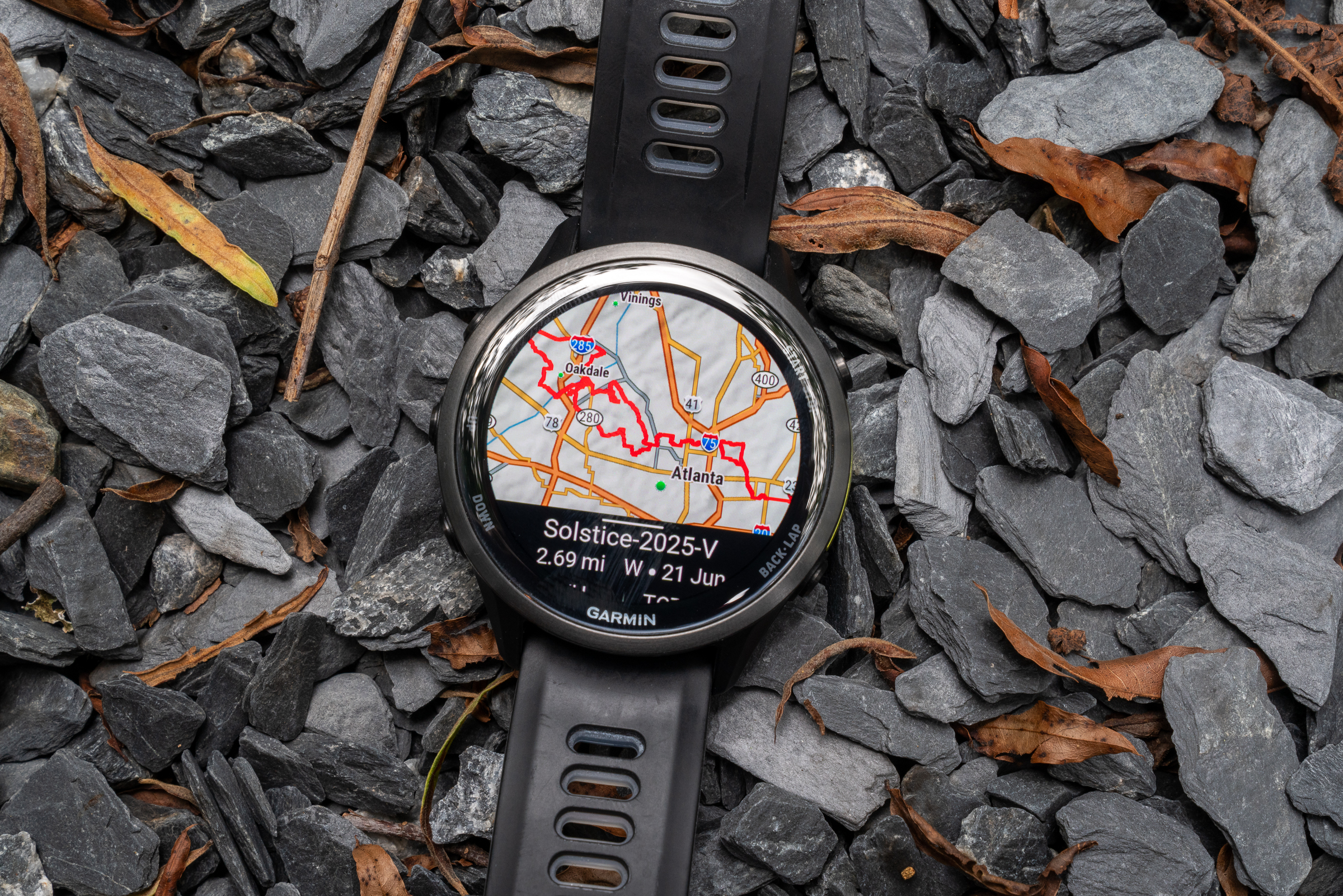
In a 2020 survey, 27% of Singletracks readers reported tracking their mountain bike rides using a wrist-mounted GPS, which, to our surprise, was slightly higher than those who reported using a bar-mounted unit. Watches have come a long way over the past five years, and the flagship Garmin Forerunner 970, released in May of this year, is the definitive case in point. It’s fully featured for mountain biking and pretty much any other sport too, plus its smartwatch features are on par with those found on Apple, Samsung, and Google watches.
I’ve been testing the Garmin Forerunner 970 since early June, and it’s easily the best one I’ve worn. Not only that, it’s starting to take the place of my bar-mounted Edge GPS for certain rides.
Garmin Forerunner 970 key specs
The features mountain bikers want
Though the Garmin Forerunner line is targeted at runners rather than bikers, these running watches offer cyclists pretty much all the same features as the larger, bar-mounted Edge devices. Even the least expensive Forerunner unit, the Forerunner 55, tracks how far and how fast you ride, along with important health stats like heart rate.
The Forerunner 970 goes well beyond the basics, however, delivering mapping, navigation, and routing that’s surprisingly detailed for such a small screen. On a recent evening ride, friends remarked on how bright the 454×454 pixel screen looks, and as you can see in the photos, the level of clarity and detail is amazing. Unlike my Garmin Forerunner 235, I can actually read most of the data fields without my glasses, which is a huge upgrade. The on-watch map shows road names and dashed trail lines, making it possible to navigate unfamiliar trails with the watch alone. You can even load GPX routes to follow.
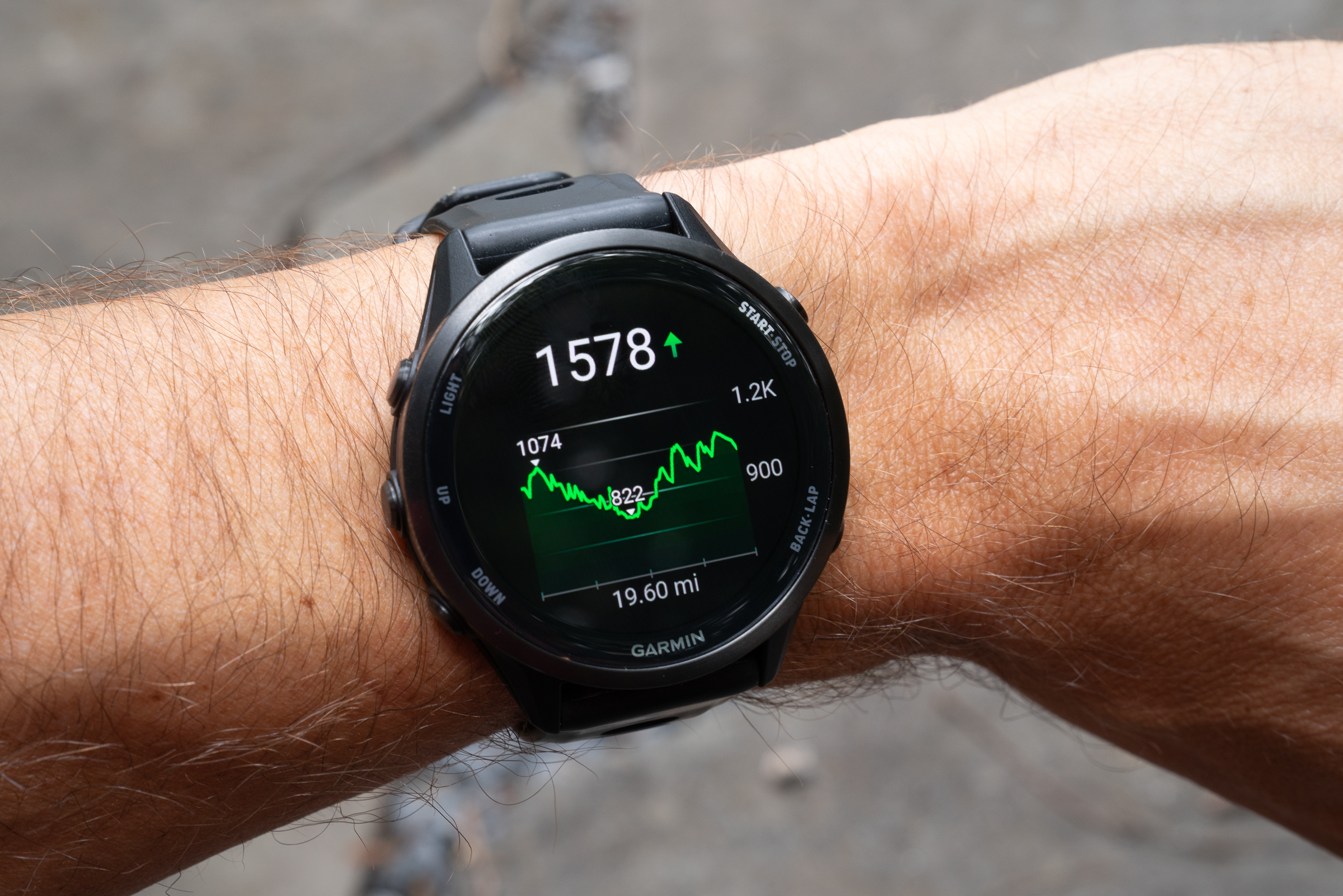
Of course, a watch screen can never be as large as a dedicated bar-mounted GPS unit, so for rides where I’m constantly consulting the map, I usually throw a larger unit on my bars. There’s also the fact that a wrist-mounted GPS is at an angle whenever your hands are on the bars, making quick glances more challenging. Even when I use my Edge GPS to record an MTB ride, I still use the Forerunner 970 to broadcast my heart rate so I can track it during the ride.
Like the Edge GPS units, you can pair additional sensors, like a power meter, to the Forerunner for additional ride data. The watch also features incident detection that can notify an emergency contact in the event of a crash if you have your phone with you and there’s a cell signal.
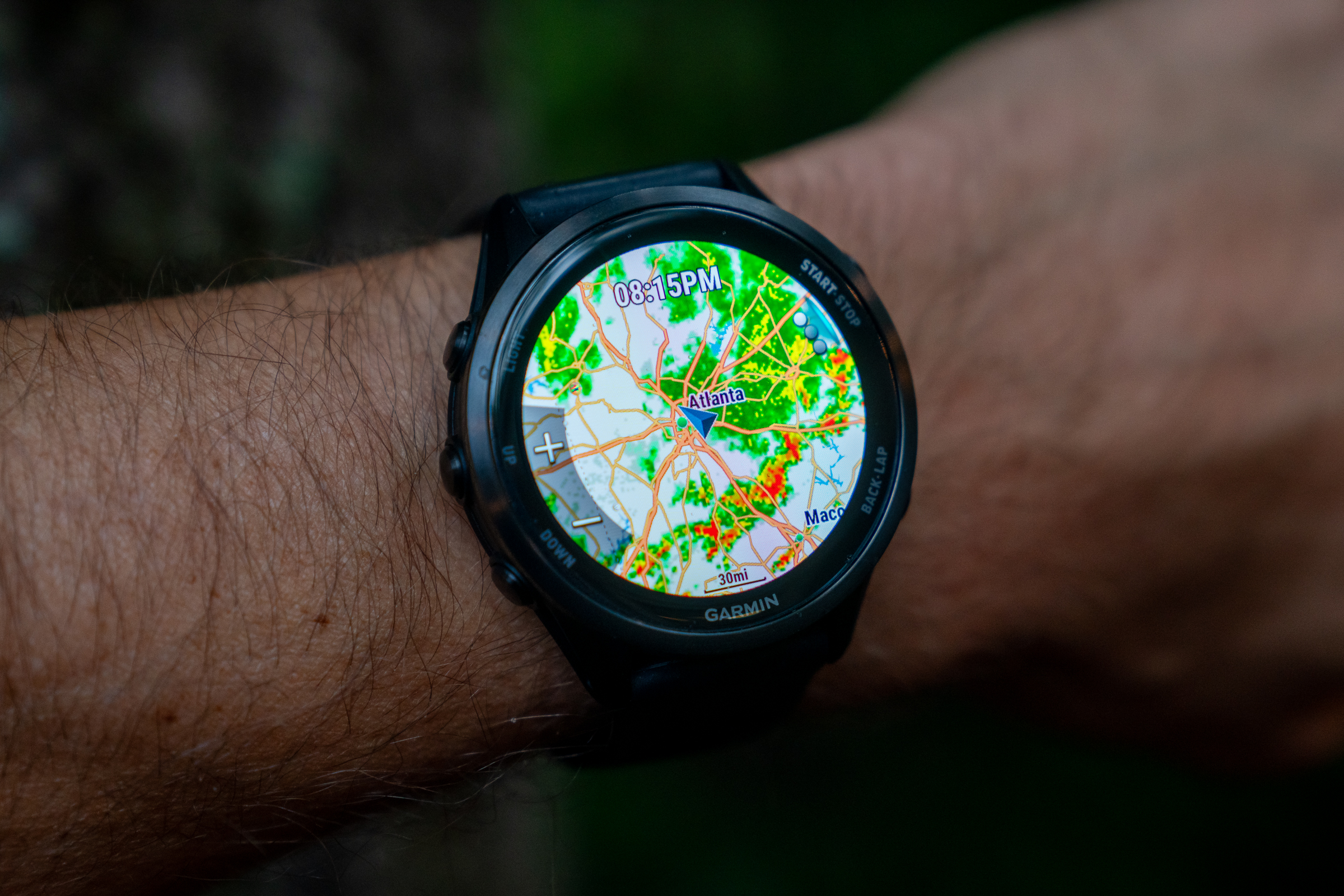
Perhaps my favorite somewhat MTB-related feature is the weather data displayed on the Forerunner 970. Summer rides in Georgia are regularly affected by scattered thunderstorms, and nobody on my group ride wants to dig their phone out of their pocket to consult the radar mid-ride. With the Garmin Forerunner 970, a dynamic radar view is easy to summon. This feature alone has already saved more than one ride that would have otherwise been a washout, as we detoured to avoid the storms.
One MTB-specific feature that I do miss for mountain biking is jump detection, and also the Grit and Flow metrics available on Garmin Edge units. I’ll continue to run an Edge GPS on my handlebars for bikepacking and Wandrer rides, or on unfamiliar trails where I need to watch the map closely.
More health and fitness features
Though mountain biking is generally the best part of my week, it doesn’t even come close to being the majority of my week. It’s during that off-the-bike time that the Garmin Forerunner 970 delivers its full value.
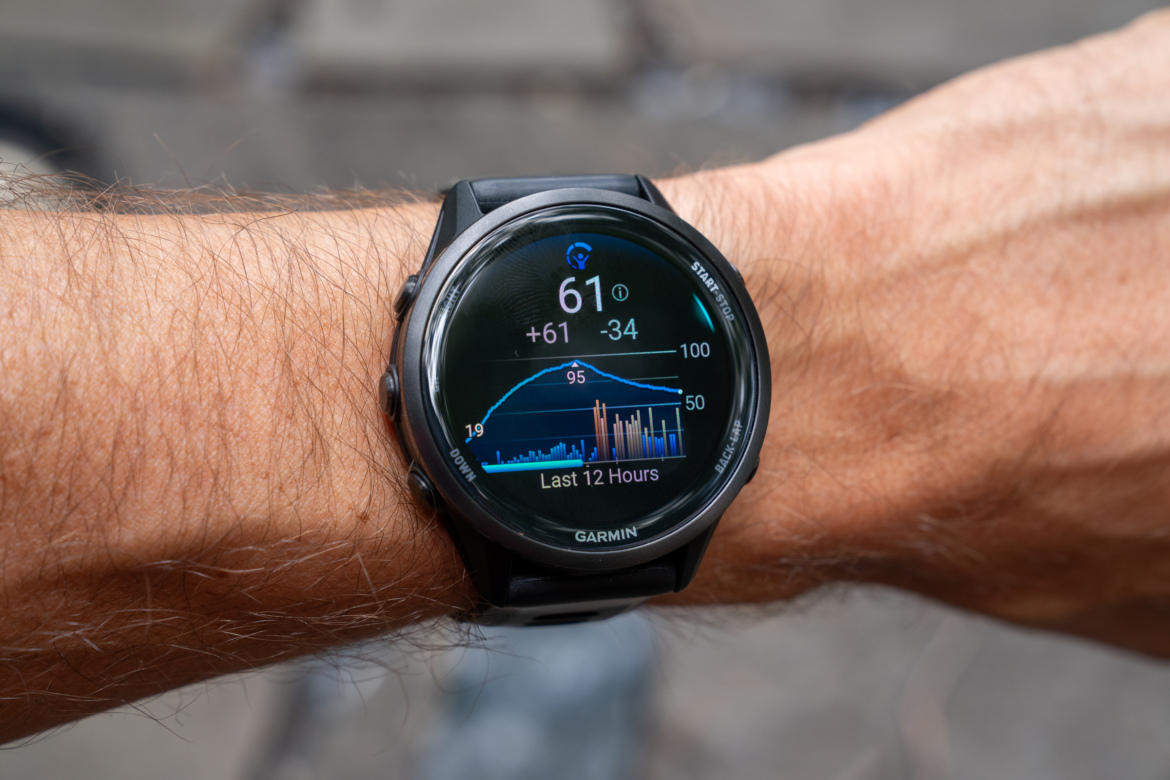
Take the Body Battery energy measurement. Garmin provides a number that represents how much energy you have, sorta like a smartphone battery indicator for your body. By tracking your workouts and stress during the day, the Forerunner 970 gives you a score on a 100-point scale, essentially a percentage. Sleep recharges the Body Battery; longer and better sleep, as tracked by the watch, improves your score more than, say, a poor night’s sleep. (There’s a separate overnight sleep score, which also operates on a 100-point scale and takes into account the various sleep stages and duration.) The Forerunner 970 can even track naps, which add to your body battery during the day.
It would be easy to dismiss the Body Battery as a gimmick, but based on my own use, I’d say it does a very good job reflecting what I’m feeling throughout the day.
So the question becomes: What to do with this information? We can’t undo a poor night’s sleep, after all, and if our Body Battery is drained, we probably already know we’re tired.
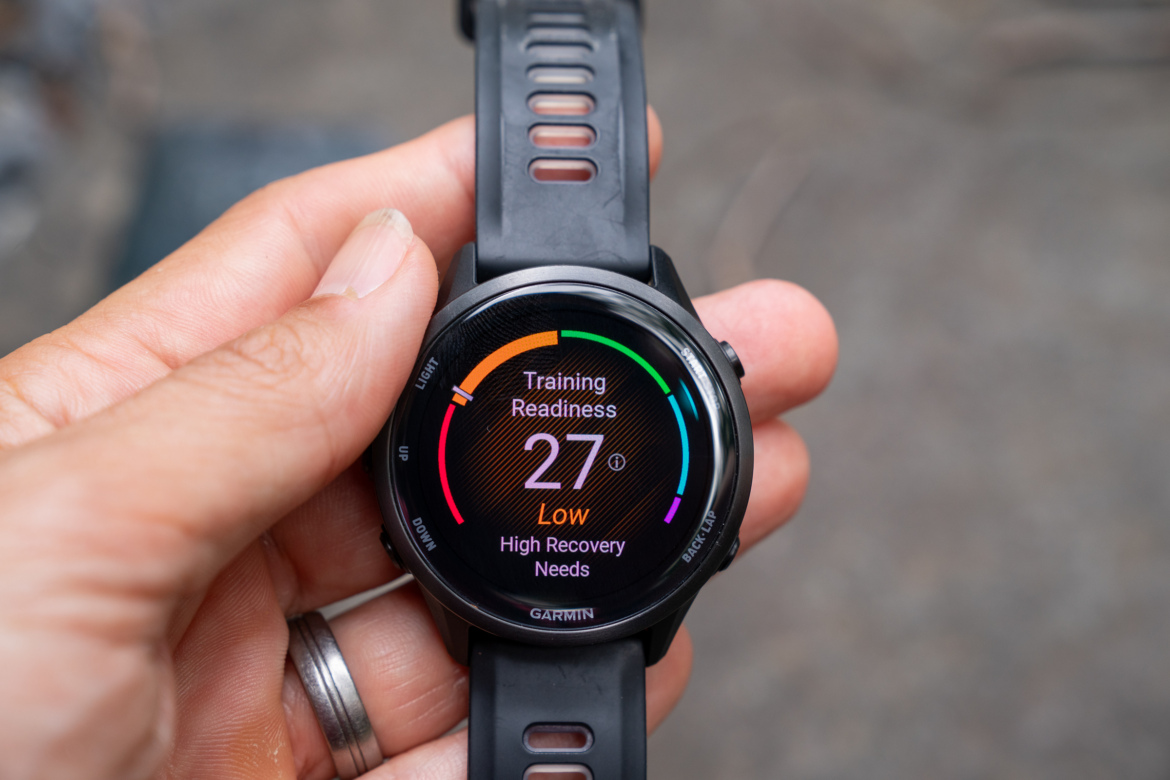
Still, the Body Battery data helps me decide how hard I can ride, or whether I should take the next day off to recover. Some days I just feel slow on the bike, and if I’m honest, I can beat myself up a bit. Confirming that my body is not fully recovered, whether due to a hard ride the day before or a rough night of sleep, not only makes me feel better, but it also reduces the risk of over-training.
On the sleep side, keeping tabs on my sleep score has helped me identify patterns in my sleep. For example, my sleep score goes down on nights when I drink alcohol, even if it’s just a little bit. (More than a little bit of alcohol results in an even lower score.) Now I take this into account if I have a really big mountain bike ride planned for the next day.
Garmin presents summary data at the end of each day before bedtime in an Evening Report, and again in a Morning Report when you wake up. The Morning Report provides training recommendations, again based on a 100-point scale based on how well rested you are. There are plenty of mornings when I’ve woken up to a training readiness score of 100 that guilted me into a run or a ride I hadn’t planned on for the day. And on days when I worry I’m just being lazy, the training readiness score assures me that I do, in fact, need to rest.
More smart features
Over the years, Garmin has added additional smartwatch features to their devices, and today the Foreruner 970 rivals more mainstream choices like the Apple Watch. You can use the Garmin Forerunner 970 to view notifications from your phone, and you can even answer phone calls directly on the watch thanks to a built-in speaker and microphone. (The Forerunner 970 does not have its own cellular data connection, so some data features only work when your phone is within range.)
It’s possible to listen to music on the Forerunner 970 as long as you download tracks before you head away from your phone. I paired my AirPods with the watch and added music files from a favorite Spotify playlist to listen to while running without my phone.
One handy feature the Forerunner 970 includes is a built-in LED flashlight. Double tap the button on the top left to activate, and choose from three brightness settings plus a red-light option.
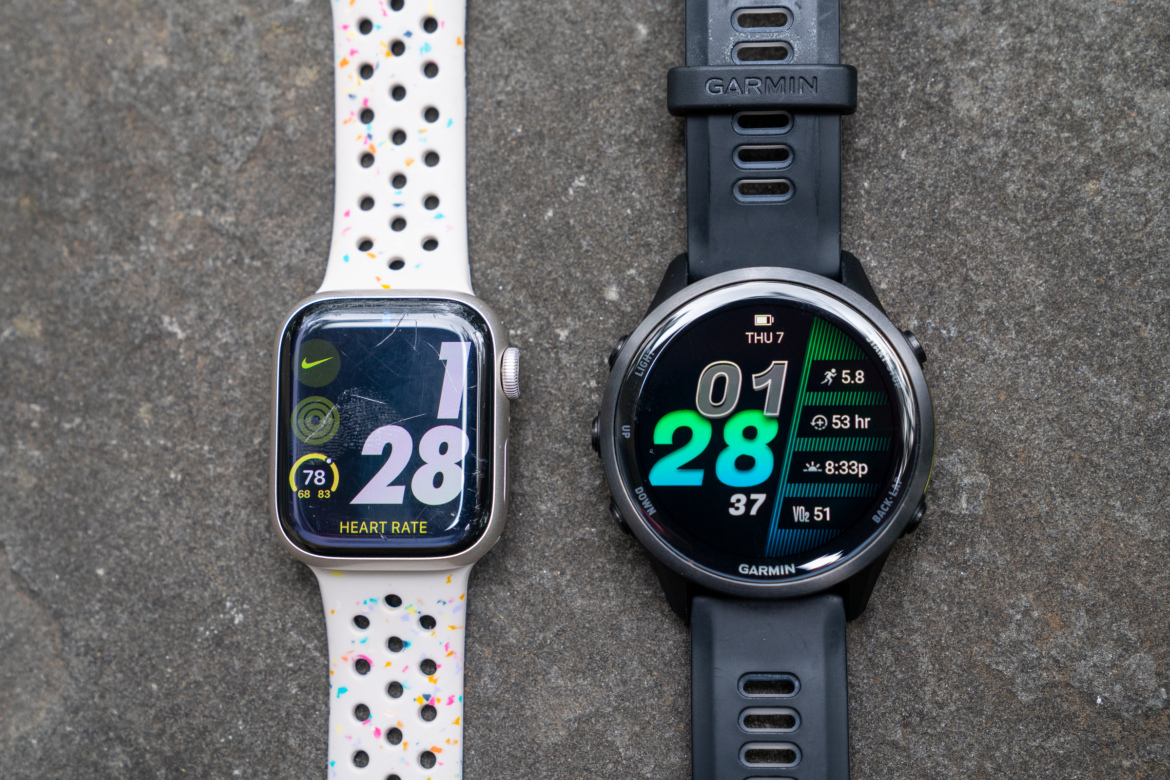
Three years ago, I tested the $799 Apple Watch Ultra, and though the latest version boasts some key upgrades, I still greatly prefer the Garmin Forerunner 970 specs for its outdoor activity and fitness focus and its far superior battery life. Though the Garmin watch doesn’t offer the same range of smartwatch features and apps as an Apple Watch, in my opinion, it includes all of the most important day-to-day functions. Leah is a daily Apple Watch wearer, and she’s even eyeing my Forerunner jealously. Compared to the Apple Fitness and Health apps, the free Garmin Connect app is more comprehensive in terms of the fitness data and athlete-focused analysis that it provides.
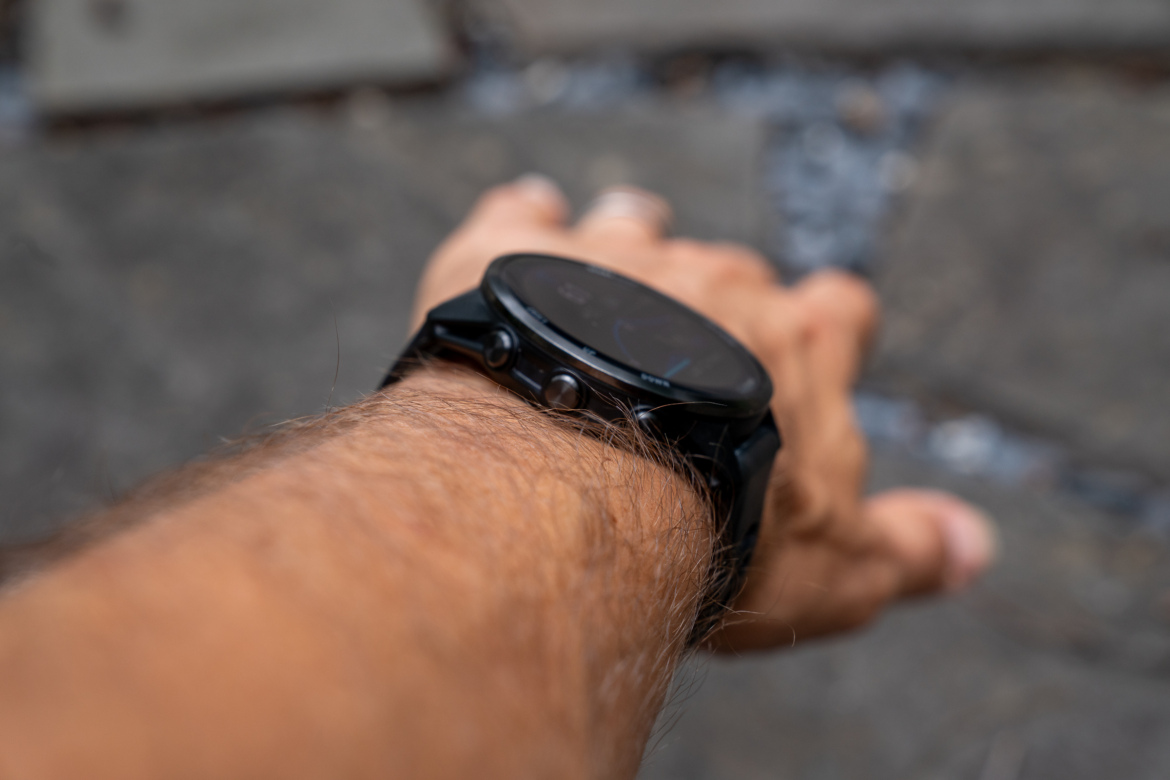
Form factor
The Garmin Forerunner 970 features a 47mm diameter, Sapphire Crystal lens with a titanium bezel. That’s a fairly large size, particularly for smaller wrists. Though the Forerunner 970 is only offered in one size, the less pricey Forerunner 570 is available in 47mm and 42mm sizes. After a couple of months of use and a few situations where I was sure I had scratched the lens, the watch remains scratch-free.
There are five physical buttons on the Forerunner 970, plus a touchscreen that lets you select, tap, and swipe. The buttons are easy enough to find by feel, but not so obtrusive that they get accidental presses when I bend my wrist. A battery-saving mode can be set to only activate the display when you tilt your wrist or press a button. The watch is generally pretty good at knowing when I tilt my wrist to look at the display, but sometimes it takes a more aggressive shake to wake the display up.
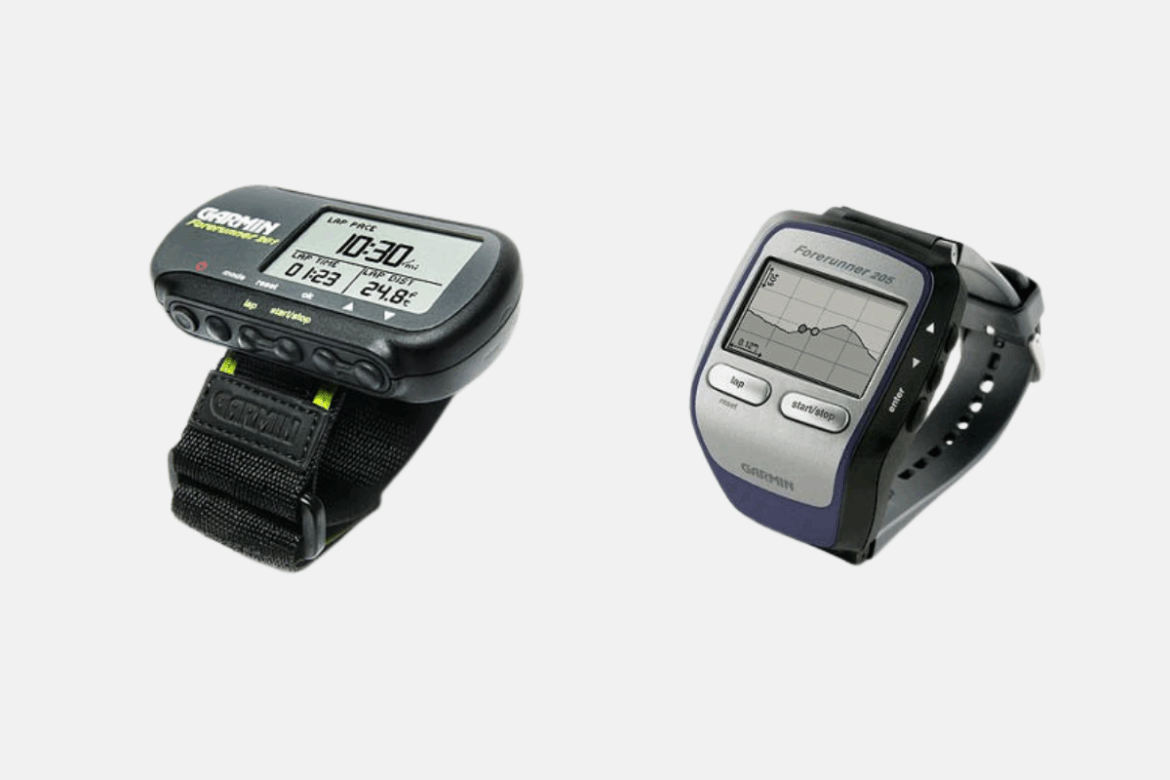
The watch has a 5 ATM water rating, which Garmin says is suitable for “splashes, rain or snow, showering, swimming, diving into water, [and] snorkeling.” I’ve been swimming with the Forerunner 970, and the only issue I’ve had is that the touchscreen is activated by water droplets in the shower and on rainy bike rides. For that reason, I turned the touchscreen feature off, and don’t really miss it since all functions are accessible via the physical buttons.
I owned a Garmin Forerunner 235 previously, and I wore it daily for six years. However, it was a pool swim that finally killed it after all that time. RIP, good and faithful friend.
Like most high-end, modern GPS units, the Forerunner 970 features multi-band GPS support for maximum accuracy in all conditions. It’s very fast to get a satellite lock before a workout; the watch is usually ready before I am. I tested the Forerunner on a quarter-mile track, and it reported 0.99mi for four laps. It even reported distances within just a few feet of another wrist-mounted GPS unit I tested across multiple activities.
Share your Garmin Forerunner 970 review
The watch is incredibly responsive, which suggests a powerful chip set inside. Zooming in and out of maps is smooth, and cycling through the menus is absolutely zippy. The only time it ever seems to lag is when I try to access the health menu that contains heart rate data, which lags for a second before landing. Navigating menus on the watch tends to be pretty intuitive, with on-screen hints to help guide you.
The Forerunner 970 charges using a proprietary Garmin cable, which isn’t my favorite, but it’s also a pretty common situation. (This is one area where the Apple Watch has an edge with its induction charger.) Charging from zero to full takes about a couple of hours, which isn’t much, but it’s long enough for me to get antsy about missing crucial health data. Luckily, I’m getting well over a week’s worth of moderate-to-heavy use on a single charge, which is just long enough for me to forget where I put that damn charging cable.
Compare the Garmin’s one-week battery life to an Apple Watch, which needs to be charged daily or every other day, and the Coros Vertix 2, which I found only needs to be charged about once per month.
Yes, it is pricey
As Garmin’s top-of-the-line running watch, the Forerunner 970 isn’t cheap. (If it’s any consolation, Garmin does offer even more expensive outdoor adventure watches like the tacix 8, Fenix 8, and Enduro 3.) At $749, it’s only slightly less expensive than an Apple Watch Ultra.
If the Forerunner 970 is out of your price range, the Forerunner 165 delivers the majority of the feature set — minus mapping, which could be a deal-breaker if you’re hoping to replace a GPS head unit —for $299 (or $249 if you can live without music on your watch).
Pros and cons of the Garmin Forerunner 970
Pros
- Screen is brilliant and easy to read in any light conditions
- Mapping and navigation built in
- Smart features like weather tracking and phone connectivity
Cons
- Proprietary cable — don’t lose it or forget it on vacation!
- Touchscreen is easily confused by water droplets
Bottom line
Is it possible to develop an unhealthy addiction to a health and fitness tracker? I’m beginning to think so, but that won’t stop me from wearing the Garmin Forerunner 970 non-stop and poring over my ride and run data daily. It’s easily my favorite Garmin device yet; I just hope my Edge doesn’t get jealous.


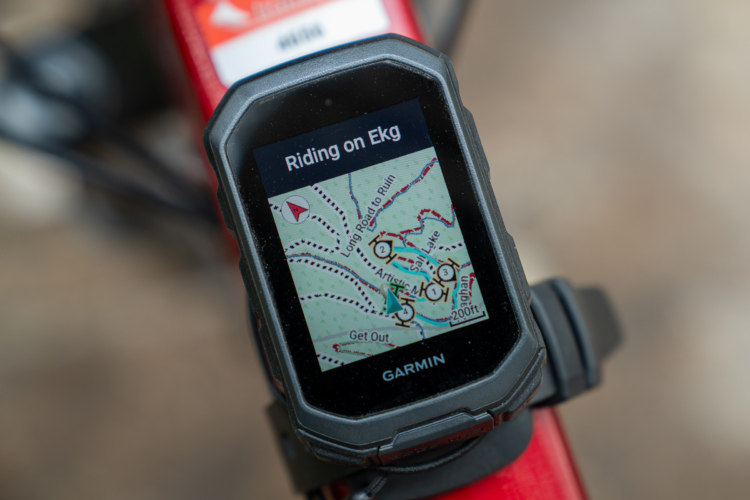



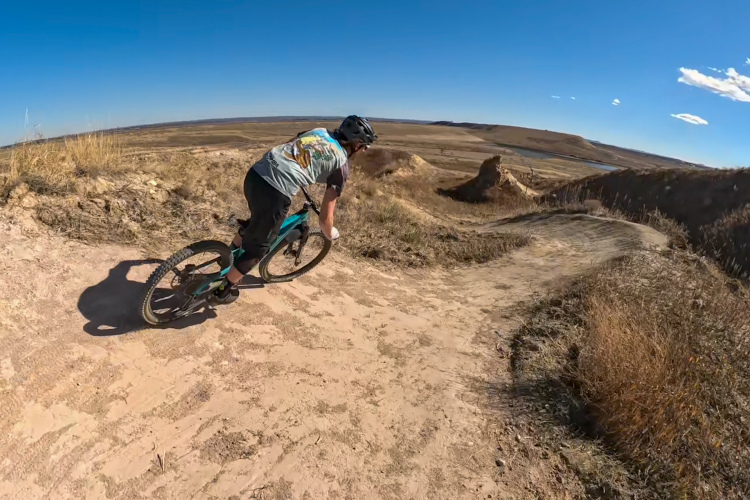


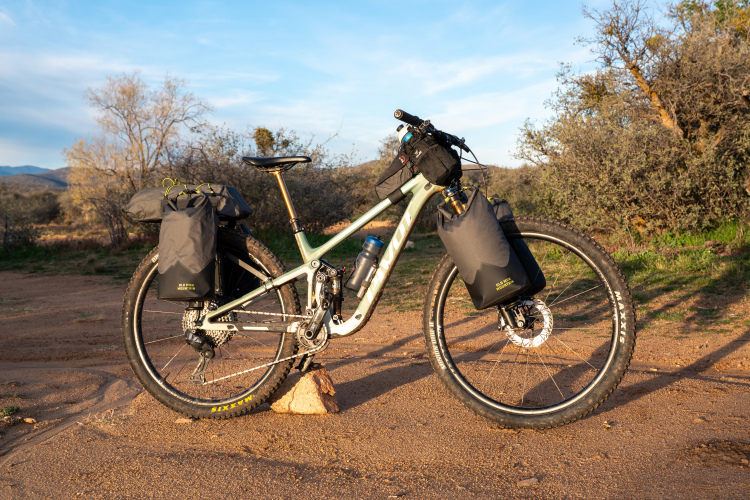

1 Comments
Aug 13, 2025